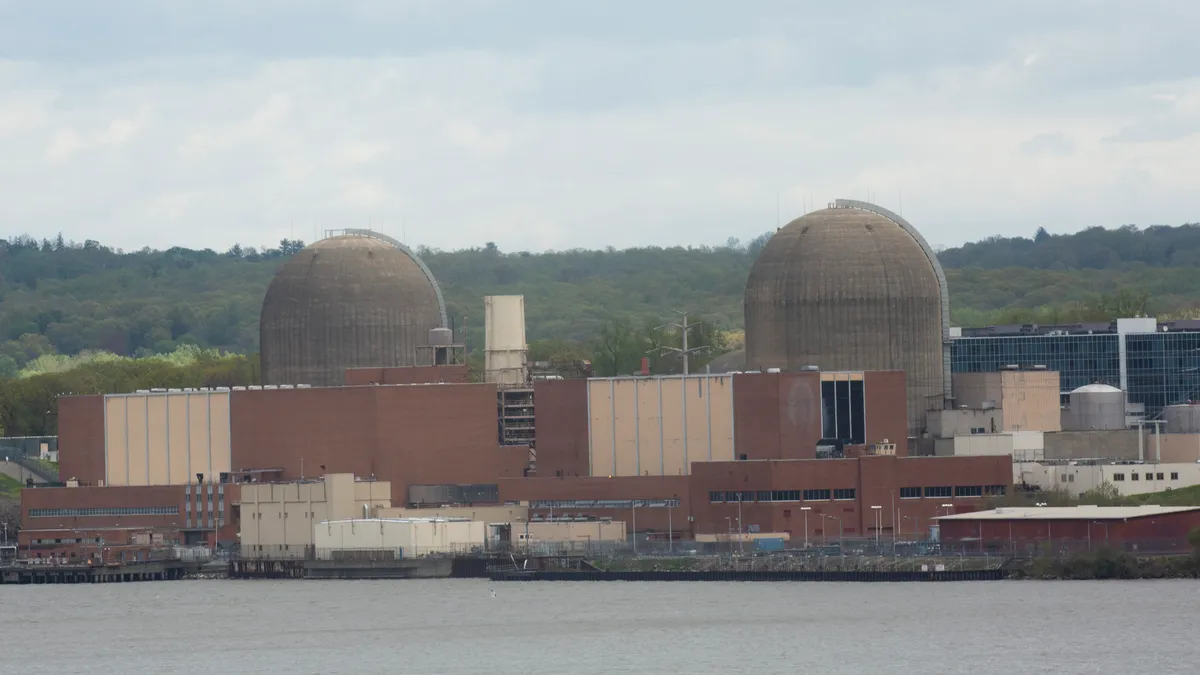UPDATE: June 29, 2022: Pacific Gas & Electric Co. asked the Department of Energy on Tuesday to extend a July 5 deadline for applying to a support program for at-risk nuclear plants by 75 days, according to Reuters.
The request comes as California lawmakers are considering a bill that supports energy measures in Gov. Gavin Newsom’s May budget proposal, including creating a “strategic reliability reserve fund” to help boost the state’s power supplies.
Dive Brief:
-
The Department of Energy this week launched a $6 billion support program to help keep struggling nuclear power plants operating.
-
The program's first award cycle is for nuclear units that are preparing to stop operating "imminently and with a high degree of certainty," according to DOE guidance. Three units meet that criteria, but their owners, Entergy and Pacific Gas & Electric, plan to retire them on schedule, according to company officials.
-
A second application cycle for at-risk nuclear plants is set to begin late this year.
Dive Insight:
A dozen nuclear units have retired in the U.S. since 2013, leading to an increase in air emissions where they had been operating, according to DOE. The Biden administration aims to help existing plants keep running in an effort to eliminate carbon dioxide emissions from the power sector by 2035.
The Infrastructure Investment and Jobs Act included a four-year $6 billion credit program for struggling nuclear plants, which produce about 20% of U.S. electricity and about half of all carbon-free power.
Applications for the program's first round of funding are due May 19. The second award cycle is set to start late this year. The infrastructure act allows DOE to allocate $1.2 billion per "award year."
Units that could take advantage of the program's initial round include Entergy's 777-MW Palisades single-unit plant in Covert Township, Michigan. In 2017, Entergy said it planned to retire the plant this year.
Entergy plans to take the plant offline at the end of May, and then transfer it to Holtec Decommissioning International for decommissioning, according to Nick Culp, Entergy senior manager, Northeast Government Affairs.
"We have and will continue to entertain discussions with qualified nuclear merchant plant owner/operators who may want to purchase and continue operating Palisades," Culp said in an email Wednesday. "However, it is important to note that no formal proposal to acquire Palisades has been made that provides an opportunity for continued operations and that eliminates the substantial financial and operational risks associated with unwinding the existing contract with Holtec."
PG&E plans to retire 2,240-MW Diablo Canyon's Unit 1 and Unit 2 in San Luis Obispo, California, when their operating licenses expire in November 2024 and August 2025, respectively.
"As a regulated utility, we are required to follow the energy policies of the state," Suzanne Hosn, PG&E spokesperson, said in an email Wednesday. "The plan to retire Diablo Canyon Power Plant was introduced in 2016 and approved by the California Public Utilities Commission, the state legislature, and Governor Brown in 2018."
The Nuclear Energy Institute plans to help its members take advantage of DOE's program for at-risk nuclear plants, according to Matt Crozat, executive director of policy development at the trade group.
"We will work with our members to ensure this program is as effective as possible and continue to advocate for a production tax credit, which will offer greater certainty for owners to make long-term investments in their carbon-free nuclear plants," Crozat said Wednesday in an email.
A 10-year production tax credit for nuclear plants was included in the Build Back Better Act, which failed to pass the Senate last year, but may come back in a different form in the coming months.














